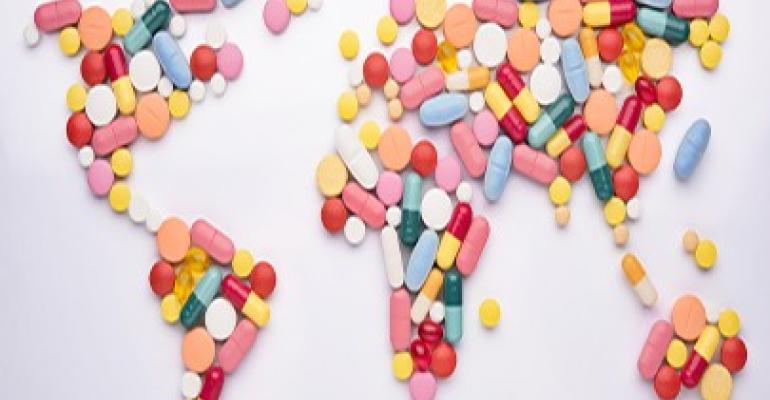Africa also bears 25 per cent of the global disease burden and is served by merely 2 per cent of the world’s healthcare workforce. As the population booms, there will be an increasing need for high quality, accessible healthcare services to achieve universal health coverage (UHC), where all people will have the health services they need without facing financial hardship. The target to achieve UHC by the year 2030 was set out in Sustainable Development Goal (SDG) 3 and provides a goal for the continent to work toward. While investment in healthcare and coverage of key health services is increasing, Africa still has a long way to go.
Social and economic development in certain areas has significantly improved across the African continent and there is great potential to achieve more. One of the primary obstacles is the large burden of disease, which continues to be a barrier to faster development. It has become a significant cause for concern for policy makers, prompting the African Union Ministers of Health to harmonise all existing health strategies into the Africa Health Strategy (AHS) under Agenda 2063: The Africa We Want. This visionary document provides a strategic direction to Africa’s efforts in creating better health for all.
The AHS converges all health initiatives and calls on multilateral agencies, bilateral development partners and other stakeholders in Africa’s development to build their health contribution around this strategy, which recognises that the capacity of the private sector is not yet fully mobilised. Clause 111 (c) states that, “Member States will review their Health Plans and will address issues of accountability within the health sector. They will also put in place advocacy, resource mobilisation and budgetary provision as a demonstration of ownership. They will also undertake monitoring and evaluation at country level and report to the RECs and AU Commission. They will also ensure participation of civil society and the private sector in the development and review of national health programmes and create a conducive environment for this to happen. Member states will also harmonise their policies and strategies to ensure coherence.”
With this backdrop, it is essential for Africa to focus on how the private health sector can bridge the gap towards achieving the goals set out in AHS. This includes robust frameworks, policies and governance, as well as integration of the private sector. To effectively achieve this, both the public and private sectors have an important role to play.
The public health sector, led by the African Union, should work to establish policies and frameworks that set the stage for the private sector to reach its potential. Due to significant resource constraints, governments are quickly realising that they are unable to carry the full burden of providing health services to their respective countries. Government policies should create an enabling environment for the private sector, incentivising them to invest in the health sector, thereby strengthening the sector and the overall economy.
Additionally, there should be an increase in integration, first regionally, but eventually across the entire continent. When countries are more integrated, the best practices, ideas and resources of each nation can spread across borders and improve overall health outcomes. In this process of integration, standardisation is also needed. Policies and regulations need to be uniform for continental and international trade within Africa to happen seamlessly. When nations have different quality standards, it makes it very difficult for resources (including medications, equipment, or even health workers) to cross borders and benefit both countries. This will also increase a sense of inter-dependence between African nations and reduce Africa’s dependence on foreign aid.
The private health sector, led by the Africa Healthcare Federation (AHF), needs to work closely with the AU and individual African countries to advocate for policies that benefit the entire health sector. By working together, the public and private sectors can become more than the sum of their parts, each benefiting from the strengths and resources of the other.
The private sector also needs to be aware that investing in healthcare is worthwhile, both for long term economic development at the national and continental levels, as well as the profitability of their own organisations. Achieving the Global Goals for Sustainable Development opens up $12-30 trillion of economic opportunities for the private sector with at least 50 per cent located in developing countries. The $12 trillion can be realised through 60 market “hot spots” in four economic systems: food and agriculture, cities, energy and materials, and health and well-being. This has the potential to create 380 million new jobs by 2030, with almost 90 per cent of them in developing countries; 46 per cent of these will be in Africa, with an estimated 28 million health jobs in Africa. Within the health and well-being pillar, key investment opportunities and market hotspots have been identified in the areas of risk pooling, disease management, remote and tele-monitoring amongst several others.
There is no question that Africa faces significant challenges when it comes to achieving UHC. Its rapidly growing population, the significant disease burden as well as financial constraints all represent substantial obstacles to overcome. However, with leadership from the African Union and the Africa Healthcare Federation, promoting collaboration between public and private health sectors, there are many reasons to be optimistic. The private sector has so much to offer and with further integration between nations across the continent, this potential will only increase. If public and private sectors can collaborate, the SDG target of achieving UHC by 2030 is within Africa’s reach.


